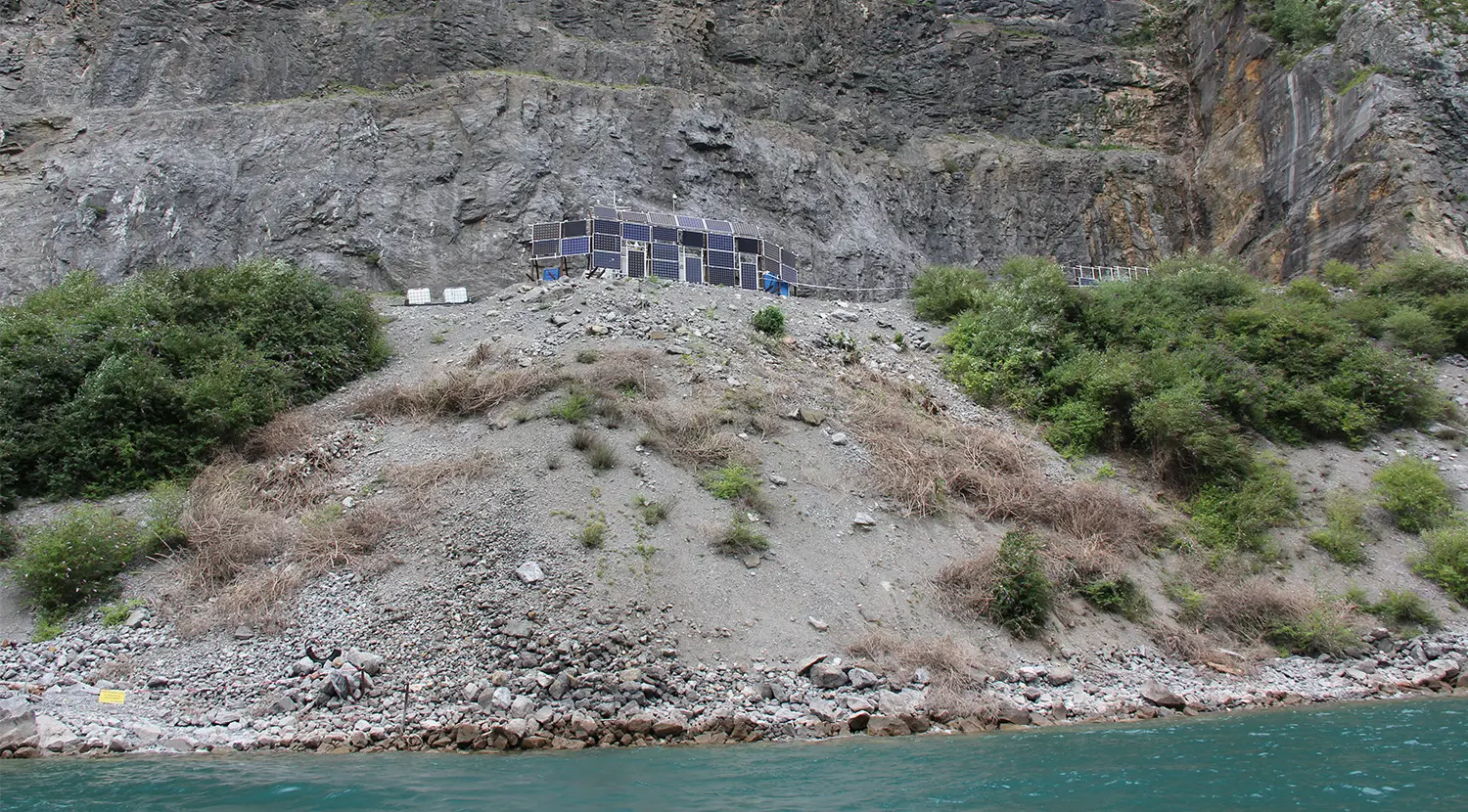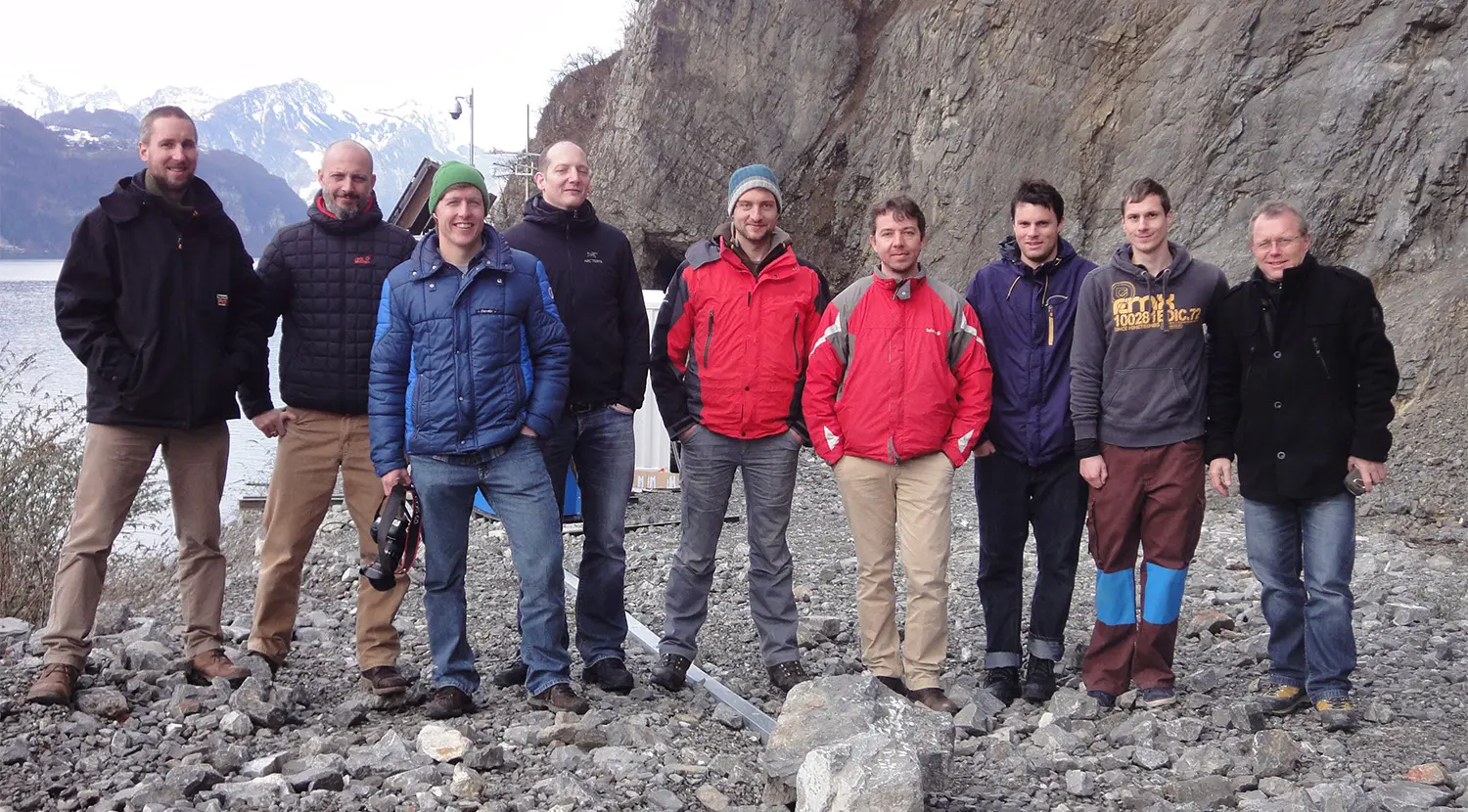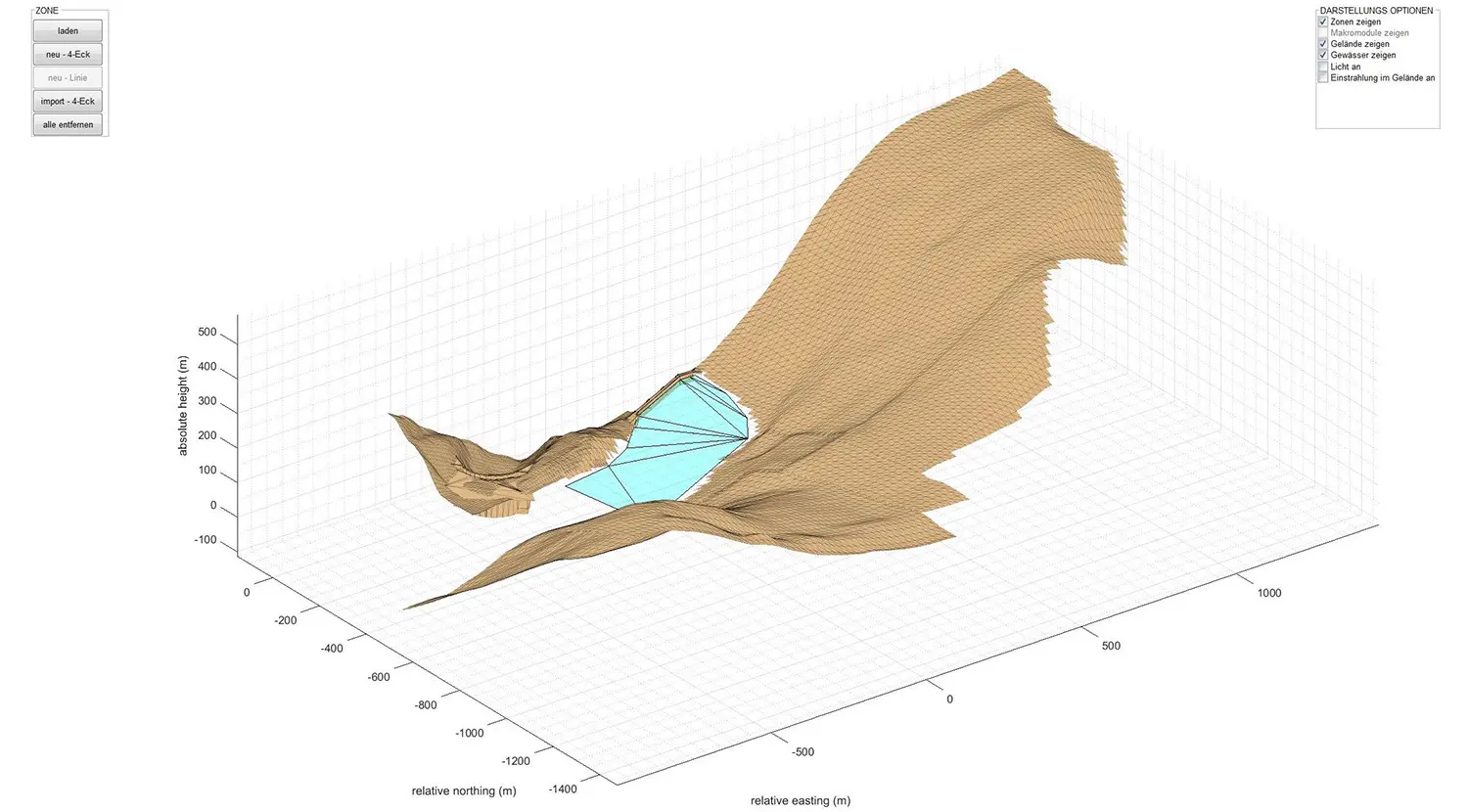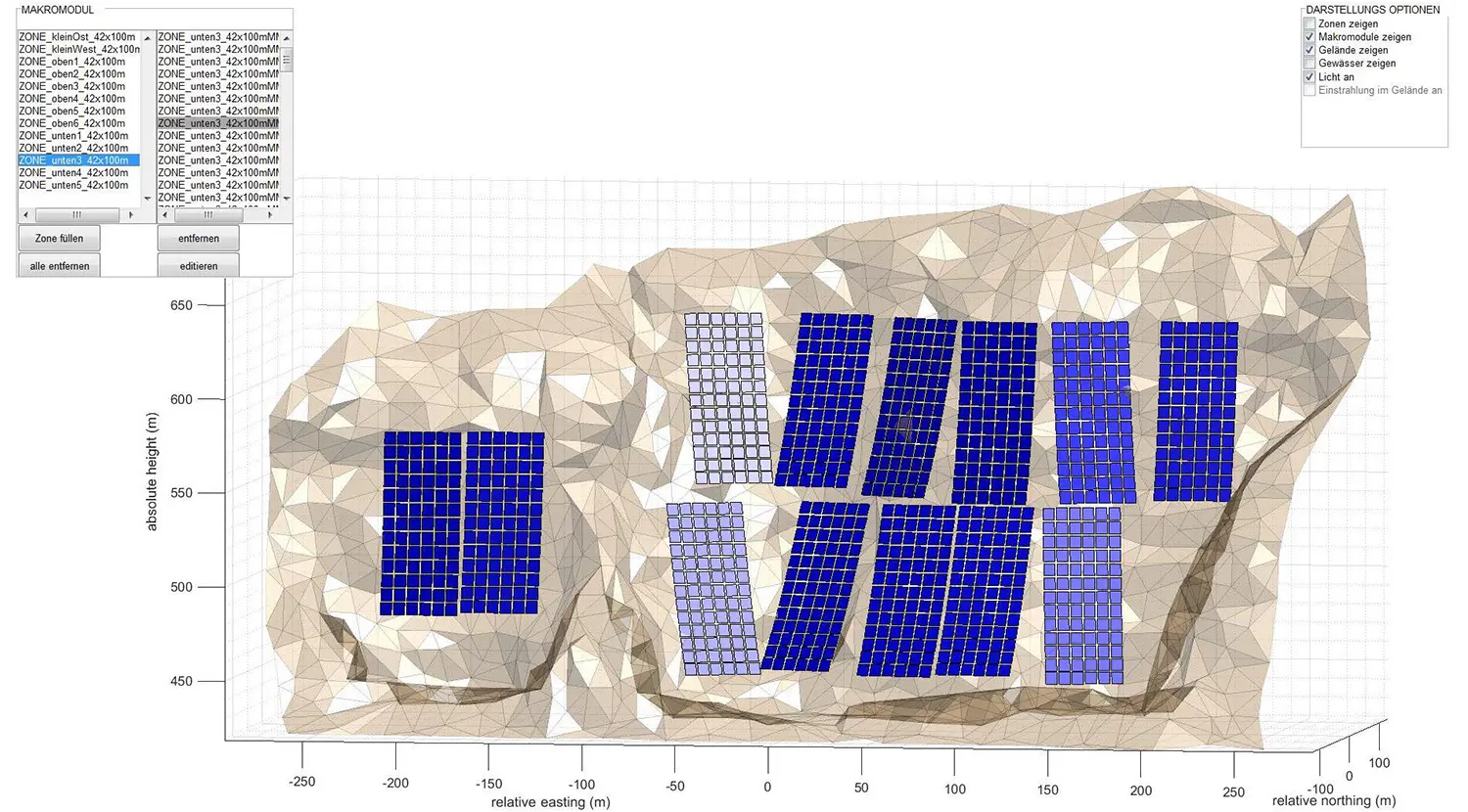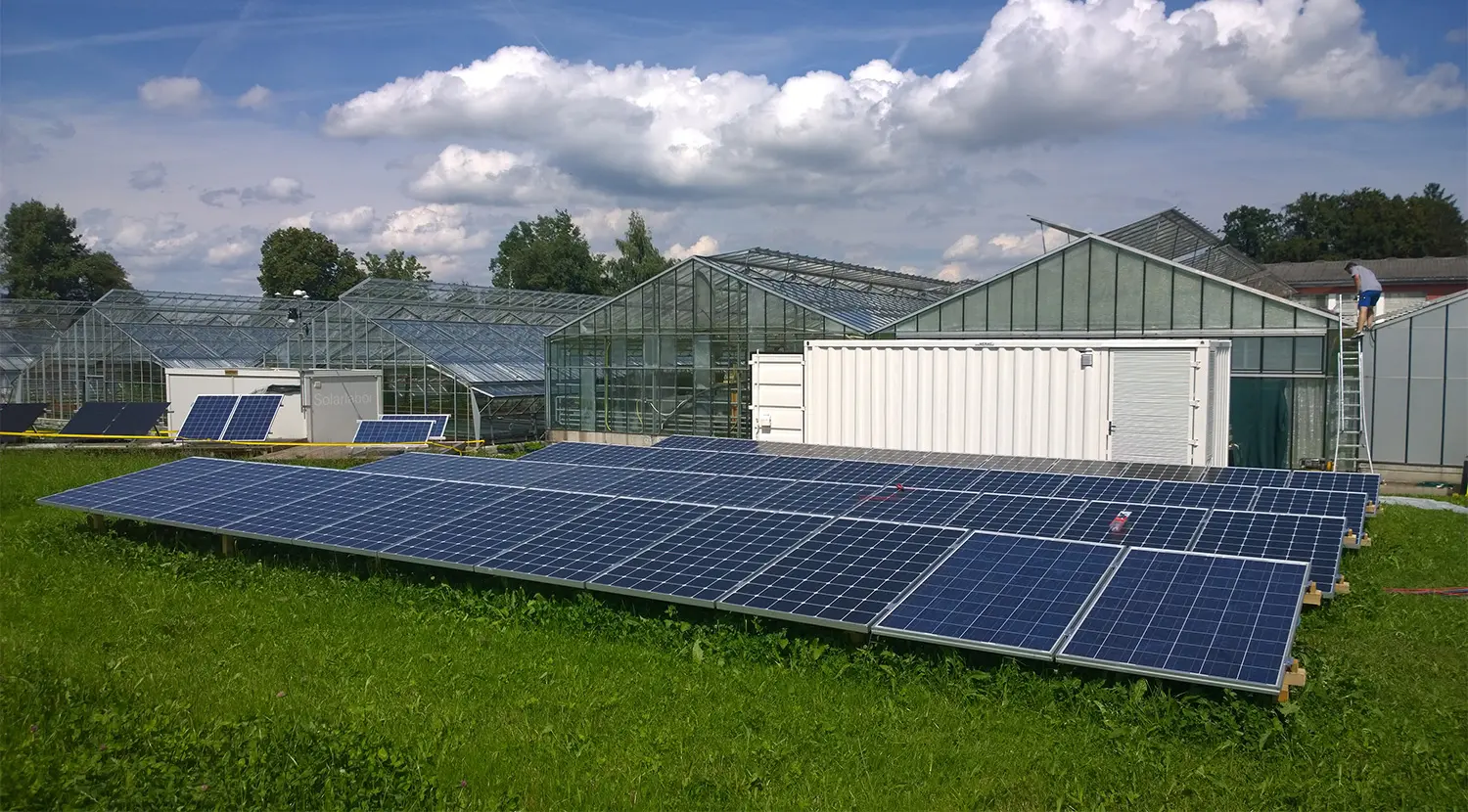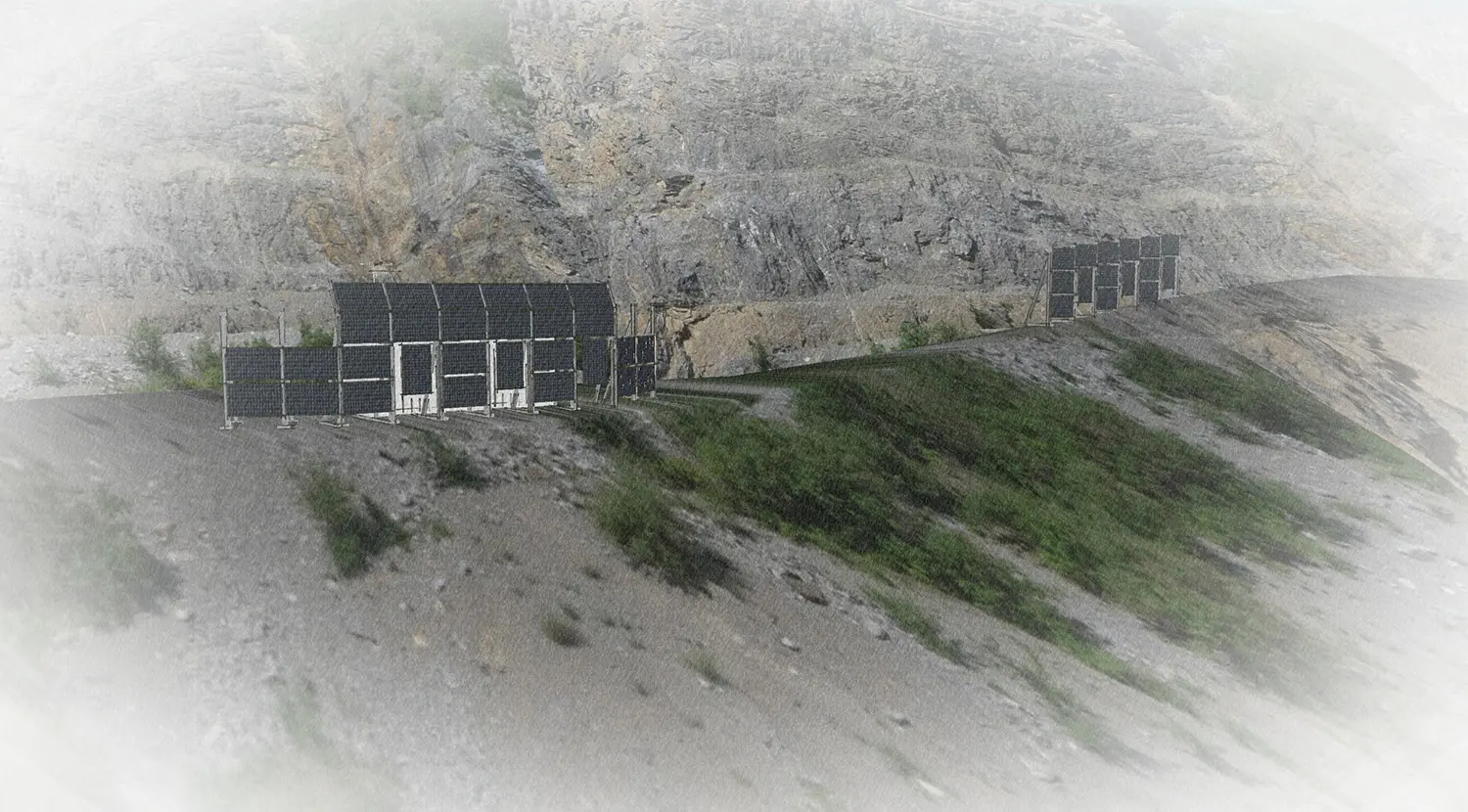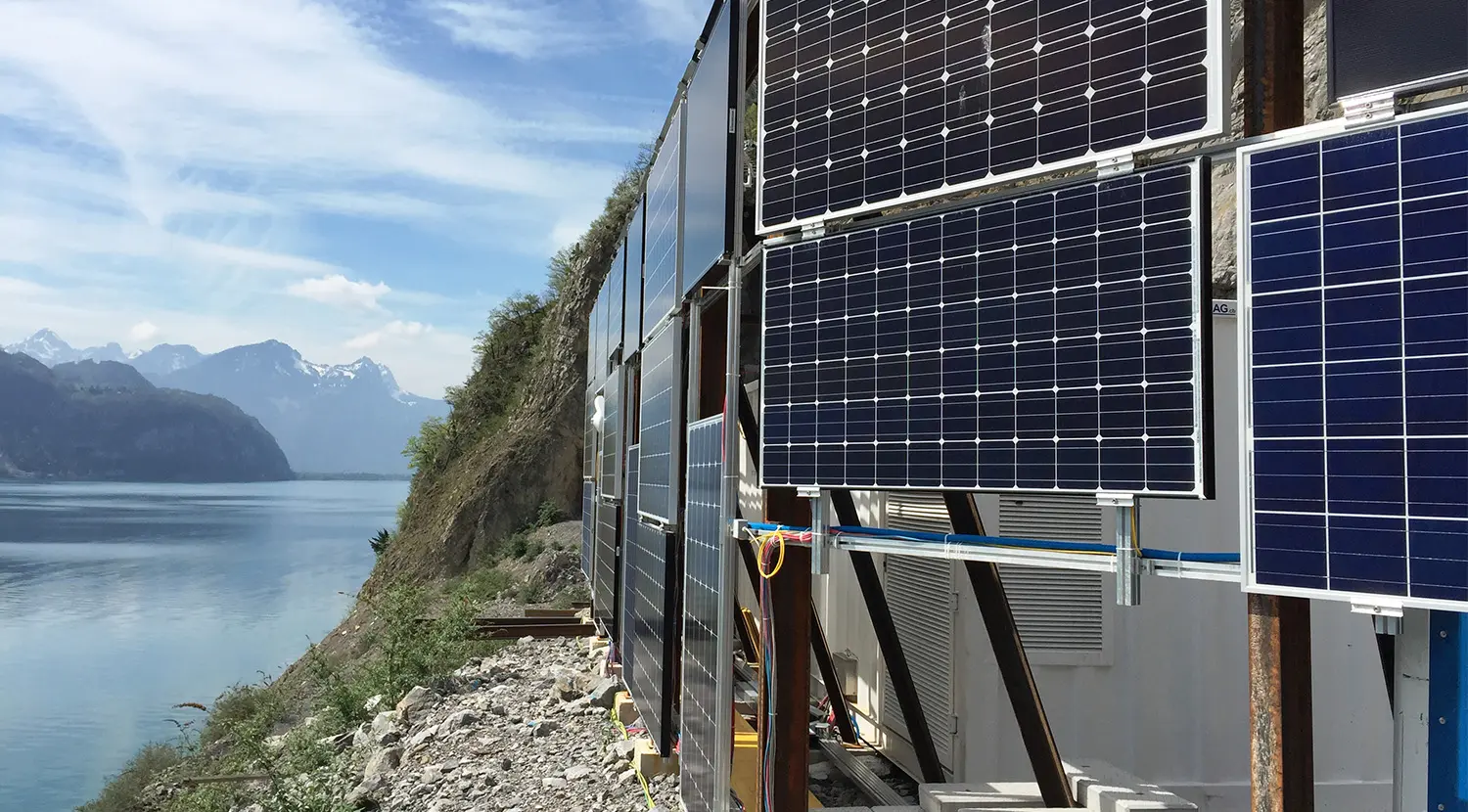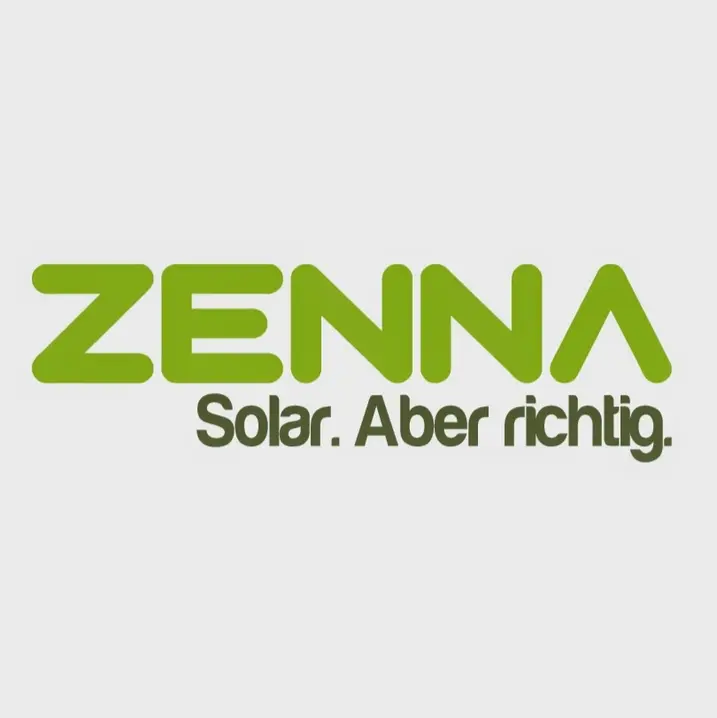Alpenstrom
A new software tool for simulating large photovoltaic systems (PV systems) with complex geometries is being developed at the ZHAW Wädenswil. It is also suitable for planning and designing photovoltaic systems in mountainous areas.
To validate and optimize the tool, the ZHAW Wädenswil and the EKZ are operating a photovoltaic test facility in an old quarry on Lake Walen. Yield data from 43 PV modules of different technologies and orientations are recorded there in high temporal resolution. The EKZ is planning the largest ground-mounted PV system in Switzerland at this location. The planned power plant has several special features that distinguish it from other large-scale projects, including the steep angle of the modules, which should increase the share of electricity production at off-peak times («morning/evening electricity», «winter electricity») and make use of the reflection of sunlight from the lake surface.
Evaluation
The test facility is designed to answer open questions regarding the feasibility of a large-scale project at this location:
- What PV yields can be expected at the site?
- Which PV technologies are suitable at the site?
- What are the climatic conditions at the site (irradiation, air temperature, wind speed)?
- How will the yields be distributed over time? What is the proportion of winter, morning and evening electricity?
- What contribution to production can be expected due to reflection on the sea surface?
- How good is the forecast accuracy? Do the measured PV yields match the yields forecast using the measured irradiation?
Overview
Project manager: Jürg Rohrer
Project team: Kevin Arm, Sven Strebel, Gabriel Happle, Lukas Küffer (ZENNA AG), Werner Frei (EKZ)
Project financing: KTI, EKZ, ZENNA AG
Project start: 17.03.2014
Background – demand for winter electricity from optimized renewable energies
Switzerland needs to increase its electricity production in winter, partly to compensate for the decreasing share of electricity from nuclear power plants. This makes Alpine locations interesting for large-scale photovoltaic systems: while PV systems in the Midlands of Switzerland only generate about a quarter of their annual production in winter, the winter share in the mountains increases to half or more due to reflections off the snow, low temperatures and the absence of high fog.
In order to justify the high investments for large solar plants, reliable yield forecasts and sensitivity analyses are needed to ensure profitability and optimize the plant. Conventional calculation tools are quickly overwhelmed by the amount of data from a large-scale solar plant and solar modules, some of which have different orientations.
Project objectives – A tool for planning complex large-scale PV systems
The goal is to develop a planning and design tool for large PV power plants in a complex 3-D environment with special consideration of radiation contributions from reflection on water surfaces and snow. Particular emphasis is placed on the following benefits:
- Yield optimization and optimization of the temporal occurrence of the yield (winter electricity, morning electricity, evening electricity).
- High forecasting accuracy by including the environment in the radiation modeling, especially the reflection on water and snow surfaces.
- Low planning costs through simple functions and options for using freely available data.
- Increased acceptance of planned plants by considering the glare and visibility of the plant at an early planning stage and by providing suitable visual representations of the project.
- Import of 3D terrain data and generator fields from 3D modeling software
- Simple placement of a large number of PV modules within predefined areas
- Arrangement of the PV modules in hanging chain tracks / rope constructions
- Accurate shading calculation within the 3D environment
- Consideration of the distant horizon by means of a digital elevation model of the more distant surroundings
- Special consideration of the reflection effect of solar radiation on water surfaces
- Designed for the efficient planning and design of large-scale projects
- Option to determine the glare effect of the system in the planning stage
The test facility for verifying the calculation models
The test facility can measure 44 PV modules with a high temporal resolution. Each module is operated at the optimum operating point in order to test different technologies as well as module orientations. The test facility is designed for self-sufficient operation and is thus also suitable for use in remote regions. In addition to the electrical power of the PV modules, the irradiation is also measured with differently aligned pyranometers. In addition to global radiation, direct and diffuse radiation is also measured. Together with the air temperature, wind speed and direction, a climate data set can be created for the test site, which is taken into account for the yield calculation in the tool.
The measuring equipment and the energy management system for the test facility are compactly installed in an insulated 40-foot container that was specially made for the test facility. A large water tank is installed in a separate compartment to absorb the excess electrical energy from the PV modules. The thermal energy is released into the environment via a fan in the outdoor cabin. To ensure a long period of self-sufficiency, a gasoline generator is also installed in the outdoor cabin. The electrical energy for the measuring equipment and for controlling the energy and temperature management is provided by a 10 kWh lithium-ion battery.
The data is collected in the test facility and stored on a server. A mobile router and LTE directional antennas allow the data to be mirrored to our central server even at remote locations, and the system to be monitored and controlled remotely. Cameras installed at the location also allow video surveillance.
The PV modules are installed on elevations that are customized for the locations to be examined. This means that the measurement setup can be adapted to local requirements and issues.
Test setup in the Schnür quarry, Lake Walen
Two separate elevations were planned for the Schnür quarry on Lake Walen. The first module wall with 29 PV modules is placed so that it receives maximum light reflection from the lake. The majority of the PV modules are inclined at 90° and aligned to the south. Furthermore, PV modules are aligned to the west and east, and some are inclined at 60°. The second module wall with 14 PV modules facing due south was shifted sideways by around 30 meters to minimize the influence of the lake reflection.
Five main technologies are being investigated at the site, with multiple installations at each location, in order to obtain statistically reliable results. The measurement setup and the PV module technologies to be investigated were developed in collaboration with EKZ and should provide important insights for a potential solar installation at the site, as well as for checking the calculation models.
Downloads and Links (in German)
- Interview with Jürg Rohrer on solar installations in the Alps on SRF
- Interview with Jürg Rohrer on solar installations in the Alps on Regionaljournal DRS
- “Photovoltaics in the Alps: a central building block for the energy transition” - Report in the online magazine Syntopia Alpina on the potential of solar power in the Alps
- «Does photovoltaics make sense in the Alps?» - Report by Jürg Rohrer in the Bulletin SEV/VSE on the potential of solar power in the Alps(PDF 3,1 MB)
- «Solar investors are pushing into the mountains» - Report on alpine open-space solar plants in the Aargauer Zeitung(PDF 258,3 KB)
- «Alpine solar plants - does this make sense?» - presentation by Jürg Rohrer at the 2nd Energy Transition Congress in Oberburg/BE(PDF 3,1 MB)
- Die Alpen 2021/02: Those who do not use energy efficiently must be prepared to sacrifice landscape. This also includes photovoltaic plants in the mountains(PDF 1,4 MB)
- Walliser Bote: Alpine solar plants produce a lot of winter electricity, which could satisfy the increasing electricity demand for heat pumps(PDF 1,4 MB)
- Interview in the “Walliser Bote” on winter electricity from photovoltaics in the Alps(PDF 3,9 MB)
- Report in the IUNR magazine: Winter - the sunny side for alpine solar power production(PDF 1,3 MB)
- Publication on the effect of solar radiation reflection on water surfaces
- Video: Dismantling of the test facility
- Test facility measures solar potential at Lake Walen(PDF 52,8 KB)
- ZHAW Alpenstrom (Poster)(PDF 3,8 MB)
- Does photovoltaics make sense in open terrain? (Poster)(PDF 365,0 KB)
Project funding and thanks
The following institutions have made this Innosuisse project possible:
Das könnte Sie auch interessieren
Continuing education
Find out about our wide offer on CAS and courses in continuing education.
IUNR research projects
Find out about the breadth of subjects covered by our Institute.
Study
Continuing education
IUNR research projects
Find out about BSc and MSc programmes at IUNR.
Find out about our wide offer on CAS and courses in continuing education.
Find out about the breadth of subjects covered by our Institute.
